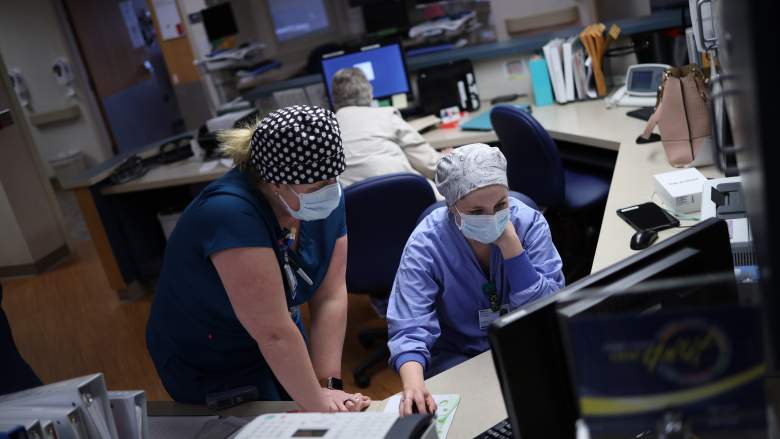
Doctors are working to understand an emerging and unusual symptom in COVID-19 patients: so-called ‘happy hypoxia’ — or silent hypoxia — is being reported by medical staff who say patients’ oxygen levels are low enough to render them unconscious or even dead, yet the patients say they feel comfortable and are able to talk with doctors and do regular things like scroll on their phones, according to a recent report in Science magazine.
Hypoxia is when there are low oxygen levels the tissues of the body, according to the Clinical Procedures for Safer Patient Care textbook. Early signs are anxiety, confusion, and restlessness. As the condition gets worse it leads to a decrease in the patient’s vital signs and eventually their level of consciousness. A related condition is called hypoxemia, in which oxygen levels are low in the blood.
For normal, healthy adults, oxygen saturation less than 92% is considered hypoxic. For patients with COPD, lower than 88% is considered hypoxic. Normally once hypoxia sets in, patients can have obvious labored breathing, trouble getting words out, their nose may flare, their skin and lips turn a blueish hue and worse, but doctors are saying some of their patients aren’t having any of these symptoms even with dangerously low oxygen levels.
Reuben Strayer, an emergency physician at Maimonides Medical Center in New York City told Science, “There is a mismatch [between] what we see on the monitor and what the patient looks like in front of us.”
Happy Hypoxia In COVID-19 Patients Is Causing Doctors to Rethink the Way the Virus Attacks the Body
According to the EmCrit Project’s Josh Farkas, an associate professor of Pulmonary and Critical Care Medicine at the University of Vermont, “Happy hypoxemia has existed forever, but these patients presented only occasionally. COVID has forced us to re-think our approach to treating this physiology.”
Farkas said that happy hypoxemia can be generated by a combination of lung functions that work in something like a perfect storm, in which certain parts of the lung are not negatively affected so that a patient feels okay even though their lung function is well below normal.
Some theories point to blood clotting as a possible culprit for this phenomenon. Science reported that Strayer finds it reasonable to imagine that hypoxia emerges because “small blood vessels of the lung are being showered with clots.” He added that while clotting is a possibility, it’s really not yet known if that is what is leading to patients experiencing silent hypoxia. It’s just one theory.
Clyde Yancy, chief of cardiology at Northwestern University Feinberg School of Medicine, emphasized that we are learning as we go with this virus. He told Stat News, “This is a real-time learning experience. I don’t think any of us can declare anything definitively, but we know from the best available data that about one-third of patients who have Covid-19 infections do in fact have evidence of thrombotic disease,” or the formation of blood clots.
Doctors Are Looking at Blood Thinners as a Possible Treatment, But More Study is Needed
Some clinicians are looking at the possibility of blood thinners as a treatment for the virus, according to The Guardian. However, according to Stat News, “Without a rigorous study … it’s impossible to know the potential risks or benefits of tPA, blood thinners, or other drugs — or what makes a difference. Until more robust research gets underway, the body of evidence now is a handful of case reports and anecdotal observations on the use of drugs to combat clots.”
Christopher Barrett, a senior surgical resident at Beth Israel Deaconess Medical Center, research fellow at MIT and co-author of case reports recently published on blood clots in COVID-19 patients told Stat News, “I can’t stress enough that it is important to have a controlled study to demonstrate that people who get this either do or don’t do better.”
With so many lives on the line, the luxury of time for lengthy studies is not something clinicians have. Doctors are trying what they can to safely try to save COVID-19 patients.
Elnara Marcia Negri, a pulmonologist at Hospital Sírio-Libanês in São Paulo, found that in treating a patient for a circulation problem in her toes with the blood thinner heparin, the woman’s breathing issues improved. Negri then treated 27 of her COVID-19 patients who had hypoxia with heparin. Those who had markers of excessive clotting received higher doses. At the time she published her preprint paper (not yet peer-reviewed) on April 30, 24 of those patients had recovered and two more were still critical, while one was removed from the study after being moved to a different hospital.
According to Negri’s assessment of her findings, “patients positive response to tailored dose heparinization contributes to the understanding of the pathophysiological mechanism of the disease and provides valuable information for the treatment of these very sick patients while we await the results of further prospective controlled studies.”
READ NEXT: What Are the Side Effects of Remdesivir?